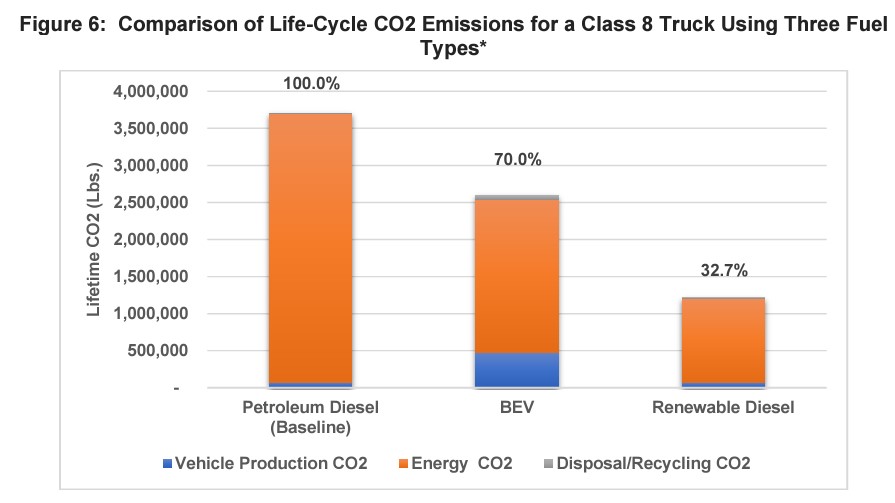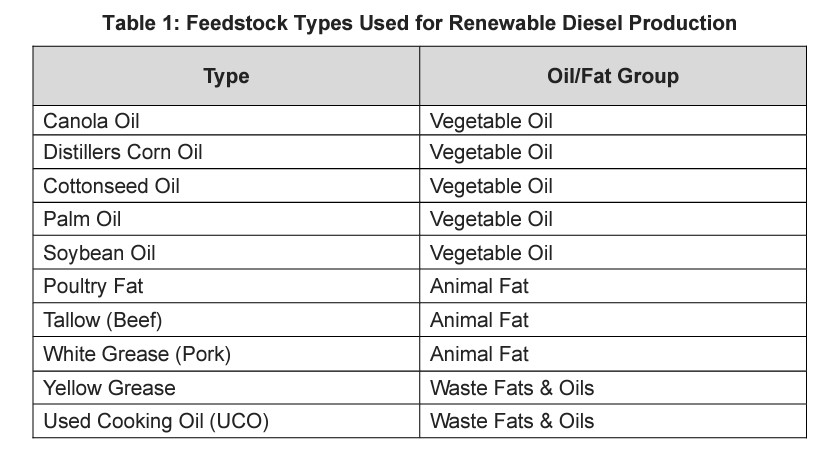Transition to BEV six times costlier than renewable diesel, ATRI report says
Renewable diesel (RD) is more beneficial than battery electric vehicles (BEVs), the latest report by American Transportation Research Institute (ATRI) reveals.
While both RD and BEV pathways have implementation costs, the report concludes that relying on BEV to decrease CO2 emissions is nearly six times more expensive than using RD.
Overall, ATRI estimated that a transition to BEV for long-haul trucking will cost over $1 trillion in electric infrastructure and vehicle purchase costs over 15 years.

However, to achieve similar CO2 benefits with RD, ATRI estimates a price tag of $203 billion, a significant cost savings for achieving the same environmental benefits.
RD is a fuel that is produced to be “chemically identical” to petroleum diesel; thus, it can be mixed with petroleum diesel in any amount or used as a standalone, drop-in fuel in a traditional diesel truck without consequences.
RD can be deployed immediately
Since RD is considerably more scalable than BEV and can be deployed immediately in trucks without modifications, it is likely that CO2 benefits using RD can be achieved on a much shorter timeline than with a BEV transition.
The report found that internal combustion engine (ICE) RD life-cycle CO2 is approximately 50% lower than BEV CO2, and RD feedstock choice may decrease this figure further. Government mandates requiring a shift to BEV instead of ICE RD would result in fleets increasing their total CO2 emissions.
In the report, RD and BEV pathways were evaluated on environmental benefits, operational capabilities and financial viability.
Battery weight
Seventy-seven percent of Class 8 trucks in the for-hire trucking sector drove more than 250 miles (402 km) per day in 2022. For every 1,000 ICE trucks replaced by BEV trucks with an additional weight of 7,000 pounds (3,175 kg) more, as many as 343 additional trucks – and their corresponding additional emissions – will be needed to haul the same amount of freight, the report said.

It was confirmed that when trucks using RD today are converted to BEV, there is a significant negative environmental impact. Additionally, the report highlights operational benefits for trucking when using RD as an alternative, as well as significant infrastructure and new vehicle cost savings.
The report also said there are potential headwinds to adoption of RD by the trucking industry.
Firstly, feedstock used to make RD have kept up with growing demand, it is thought that a point will be reached where first-generation feedstocks can no longer meet the demand from RD producers.
Secondly, while the full impact of subsidies on the RD market is not known, they are clearly encouraging production. Should subsidies be removed from the market too early, supply may decrease.
And finally, interest is growing in sustainable aviation fuel (SAF), which uses similar feedstocks and processes for production. It is possible that public policy could shape the SAF market, and divert RD from the trucking industry, thus working against industry efforts to decarbonize.
The ATRI report can be downloaded here.
Have your say
This is a moderated forum. Comments will no longer be published unless they are accompanied by a first and last name and a verifiable email address. (Today's Trucking will not publish or share the email address.) Profane language and content deemed to be libelous, racist, or threatening in nature will not be published under any circumstances.